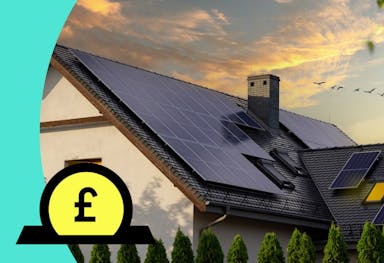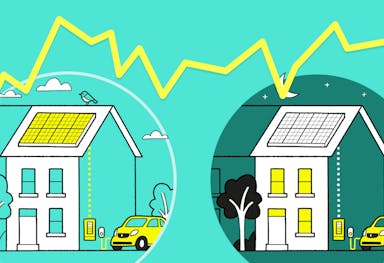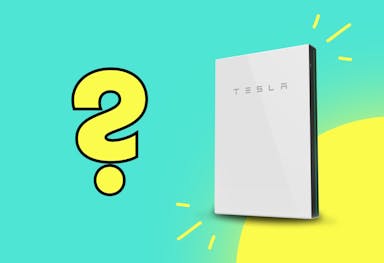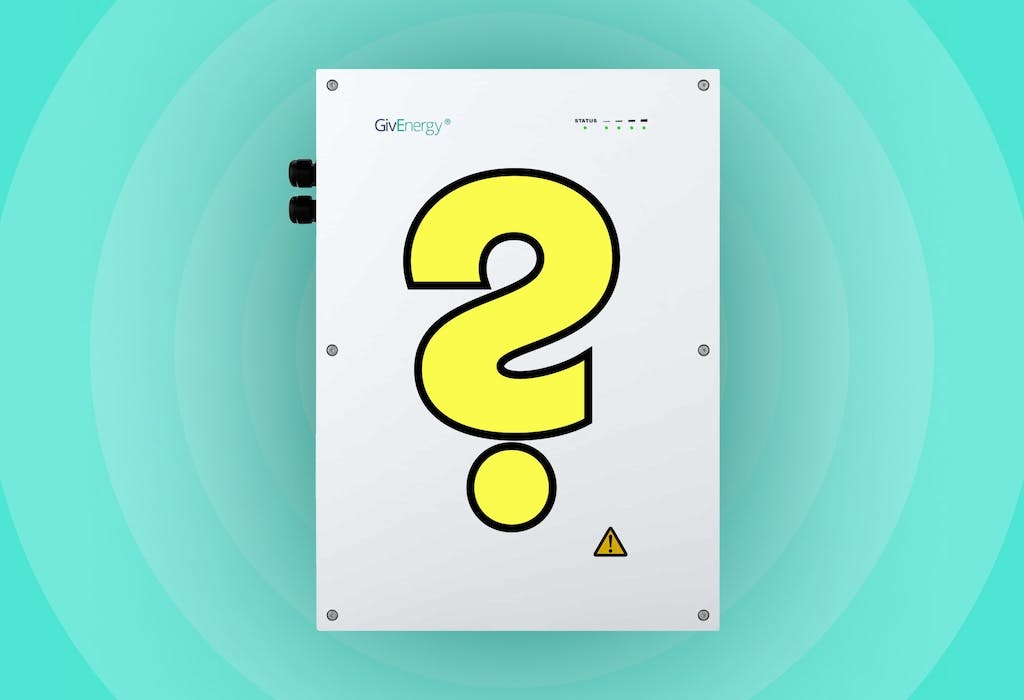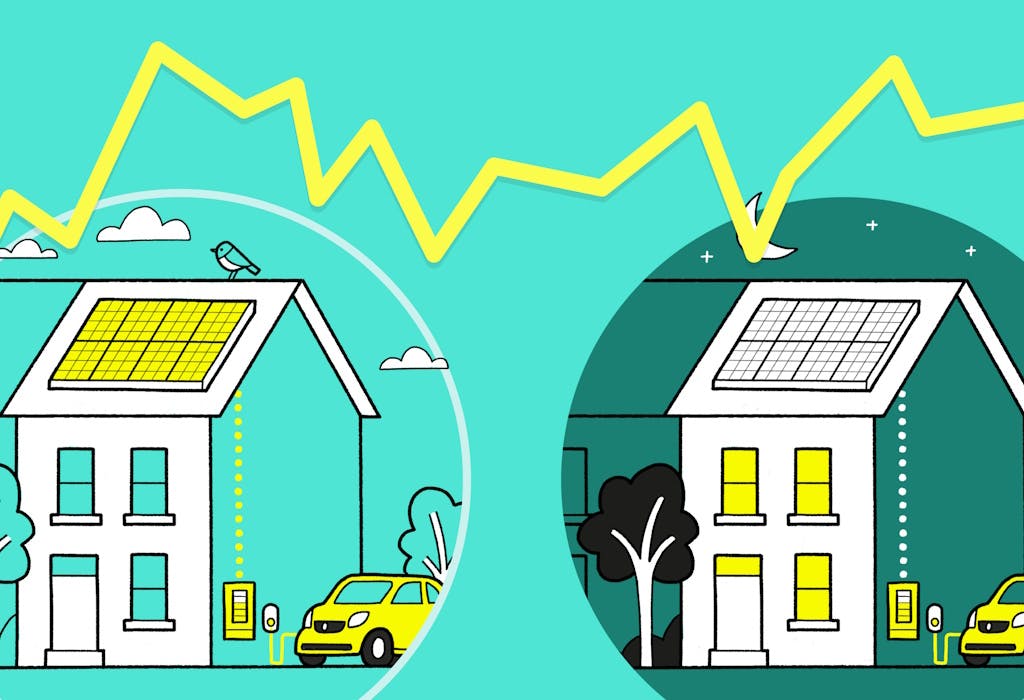- Solar advice hub
- Solar-technology
- How to charge your electric car with solar panels
How to charge your electric car with solar panels
Here's how solar works with EV charging, how many panels you need, and rough costs.


Why you can trust our content
We know that the solar industry is full of misinformation, but we only use reliable sources, including:
- Our experienced solar experts, installers and system designers
- Our own database of solar & battery system designs
- Authoritative bodies like MCS and the UK government




Calculate savings
What kind of home do you live in?
Calculate savings
What kind of home do you live in?
EV charging with solar: at a glance
Solar panels generate free, clean electricity – so it makes sense that you’d want to use it to power everything in your life.
However, though charging your electric vehicle with solar electricity can save you hundreds of pounds and slash your carbon footprint, there’s a better way.
Signing up to an EV tariff and exporting most of your solar-generated electricity can boost your savings further, with the same positive impact on the climate.
Either way, solar panels and an EV form a powerful combination, which explains why it's now so popular. 29% of EV drivers have solar panels, according to a 2023 survey by Zapmap, which is six times higher than the national average.
In this guide, we’ll explain how using solar panels to charge an electric car works, why you should consider doing things a bit differently, and how much you can save.
If you would like to see the savings you could get from a solar & battery system, answer a few questions below and we’ll provide an estimate.
Find out how much you can save
What kind of home do you live in?
Can you use solar panels to charge an electric car?
You can absolutely use solar panels to charge an electric car if you want, though there are better options financially.
We usually recommend signing up to an EV tariff that allows you to charge your car’s battery with cheap electricity during an off-peak period. You can then use some of your solar-generated electricity, while selling the rest to the grid (more on that below).
But if you love the idea of ‘driving on sunshine’ so much that you don’t mind saving less money, it’s definitely possible.
Your solar panels will come with an inverter that converts the direct current (DC) electricity that comes from the sun to alternating current (AC) electricity, which you can use in your home and to charge your car.
So once you’ve bought your solar panel system and EV, you can technically plug your car into a wall socket with what's commonly called a 'granny charger' – but that would be slow, inefficient, and potentially hazardous.
Instead, you could get an EV charger (also sometimes known as 'wallbox chargers'), which can use solar electricity to replenish your car’s battery as it’s being generated by your panels.
Unless you have a particularly large solar panel system, your charger will usually combine the solar energy you generate with electricity from the grid, to reach its standard output level.
Alternatively, you could buy a solar-compatible charger (also referred to as a 'smart charger'), which allows you to choose when you charge your car, and use exclusively solar electricity when you do so.
How does it work?
If you buy an EV charger that isn’t fully compatible with solar panels, it will still use the electricity your panels generate.
However, you won’t be able to control what source your charger uses; it’ll simply draw electricity from wherever it can.
That means it’ll probably use some grid electricity if you charge your car during the day, to meet the peak power rating of your EV charger.
To ensure that you’re charging your EV with solar, you’ll need a ‘solar charger,’ which allows you to power your car with solar electricity more effectively, with more options.
These chargers usually come with a CT (Current Transformer) clamp that automatically turns the charger on when it senses your solar panels are generating electricity.
The rest of the time, your charger either won’t fill your car’s battery at all, or will do so using grid electricity – but relatively slowly.
When compared to a regular EV charger, a solar charger can significantly increase how much of your solar electricity you use to charge your car.
More detail about smart solar chargers
An EV charger will usually provide your car with electricity at a consistent rate, which for domestic charging points is usually around 7kW. This is like measuring your shower's water pressure, in that it tracks how quickly the electricity comes out.
A solar-compatible charger allows you to adjust this rate to align it with the amount of electricity your solar panels are generating – and it's even easier to run your car on solar if you get a smart EV charger.
These devices can automatically sync up your charging rate with your solar generation rate, and give you the option to power your car with excess solar electricity, rather than exporting it to the grid.
They do this via a CT clamp, which tracks electricity as it moves between your home and the grid. It'll notify your smart charger whenever your solar panels are producing more electricity than your home's using, and your charger will alter its rate to match.
This allows you to always charge your EV with solar-generated electricity, no matter how much daylight there is or how intense it is.
Smart solar chargers also usually provide you with different charging options.
You may be able to schedule your charging periods, set your car to only charge during off-peak periods, or make it so your charger uses exclusively solar electricity.
The best way to charge your EV if you have solar panels
If you have a solar & battery system, you should sign up to an EV tariff that comes with a daily off-peak period, then charge your car during that time.
You can take full advantage of a time-of-use tariff by charging your solar battery on off-peak electricity as well, then using that energy to power your home.
This allows you to sell most of your solar-generated electricity to the grid. If you sign up to one of the best Smart Export Guarantee (SEG) rates, you can make hundreds of pounds per year from these exports.
As long as your export rate is higher than your off-peak import rate, this is the most profitable way for you to charge your EV.
Here’s an example. Let’s say you’re signed up to a standard import tariff, and it costs 25p per kilowatt-hour (kWh) to charge your car on grid electricity.
If you sign up for an EV tariff with a 7p per kWh off-peak period, and charge your car on this cheaper supply, you’ll be saving 18p per kWh – and it’ll free up your solar electricity, which you can sell to the grid.
Your export rate just has to be higher than 7p per kWh for you to profit even more than you would by exclusively ‘driving on sunshine’.
Does a battery make a difference?
A storage battery doesn’t make any difference to our recommended approach to EV charging.
After all, there’s no point using one battery to charge another battery.
And the great majority of drivers won’t need to charge their EV outside of the off-peak period – far from it.
The average driver, who racks up 7,000 miles every year , will only need to use a standard 7kW charger on their EV for six hours per week.
However, as mentioned above, having a storage battery will help you in another important way: it’ll allow you to run your household on cheap, off-peak electricity.
If you use one of the best EV tariffs – which include E.ON Next Drive, British Gas Electric Driver, and Intelligent Octopus Go – you can massively reduce the cost of your imported electricity.
And you’ll be free to export more of your solar-generated electricity to the grid, which will usually earn you hundreds of pounds per year.
How to stop your battery charging your EV overnight
Some storage batteries allow you to set their charging and discharging times and behaviours through an app, including whether or not they prioritise powering your EV.
If you own one of these models, you should be able to tell your battery not charge your EV at night.
This way, you can take advantage of cheap overnight import rates instead, which allows you to maximise your savings.
If you haven't yet got a solar & battery system, it's also worth talking to your installer ahead of time, to ensure they set up your battery so that you can choose whether or not it charges your EV.

The UK's first solar subscription
- No upfront cost
- Fixed monthly fee
- 20-year Sunsave Guarantee
What are the best EV chargers for solar charging?
If you still want to charge your EV with your solar panels because you like the idea of it, we’ve put together a list of the best electric car chargers for solar charging.
These are the top options because they’re all fully compatible with solar panel systems.
Most chargers can use solar-generated electricity, but don’t allow you to choose how much solar electricity they use.
Fortunately, at this stage in their technological development, it’s relatively easy to find solar-compatible EV chargers.
Here’s a rundown of all the models that are optimised to use solar-generated electricity.
| Company | Charger | Solar tracking method |
|---|---|---|
| Andersen | A3 | CT clamp (included) |
| Easee | Equalizer | CT clamp (included) |
| EO | Mini Pro | CT clamp (optional) |
| EVBox | Elvi | Energy meter (optional) |
| Fronius | Wattpilot (Home & Go) | Solar inverter (included) |
| Go Zero | Optimus | CT clamp (included) |
| Hypervolt | Home 2.0 or Home 3 Pro | CT clamp (included) |
| Indra | Smart PRO | CT clamp (included) |
| Marlec Engineering | Veva | CT clamp (included) |
| Myenergi | Zappi v2 or v2.1 | CT clamp (included) |
| Ohme | Home Pro or ePod | CT clamp (included) |
| Pod Point | Solo 3S | CT clamp (included) |
| Rolec | WallPod SolarCharge | CT clamp (included) |
| Smappee | EV Wall Charger | CT clamp (included) |
| waEV-charge | EV1, EV1i, or EV1s | CT clamp (optional) |
| Wallbox | Pulsar Max or Pulsar Plus | Energy meter (optional) |
What are the advantages of charging your EV with solar?
The only advantage of charging your electric car with solar panels is that you’ll reduce your carbon footprint.
With the sun powering the great majority of your driving, you’ll typically save 248kg of CO2 per year, in addition to the 1.5 tonnes you save by driving an EV instead of a petrol car.
Electricity from the national grid is much greener than it used to be, but still emits 125g of CO2 per kWh.
And this way, you can motor around the UK, happy in the knowledge that virtually every mile of your journey is powered by the sun.
The average EV owner requires 2,118kWh to power their annual driving distance of 7,000 miles, around 82% of which can typically be supplied with solar panels, according to our calculations.
Due to seasonal variations in daylight hours, the remaining 18% will typically be supplied by the grid, unless you generally drive much further in the summer.
That’s a lot of solar-powered travel, which is great – except that selling that same solar-generated electricity to the grid would be just as good for the planet.
As long as someone uses your solar electricity instead of grid electricity, it doesn’t matter whether it helps power your EV, your neighbour’s blender, or the local football pitch’s floodlights. It all has more or less the same effect, environmentally.
To find out how much a solar & battery system could save you on your energy bills, answer a few quick questions below and we'll provide an estimate.
Find out how much you can save
What kind of home do you live in?
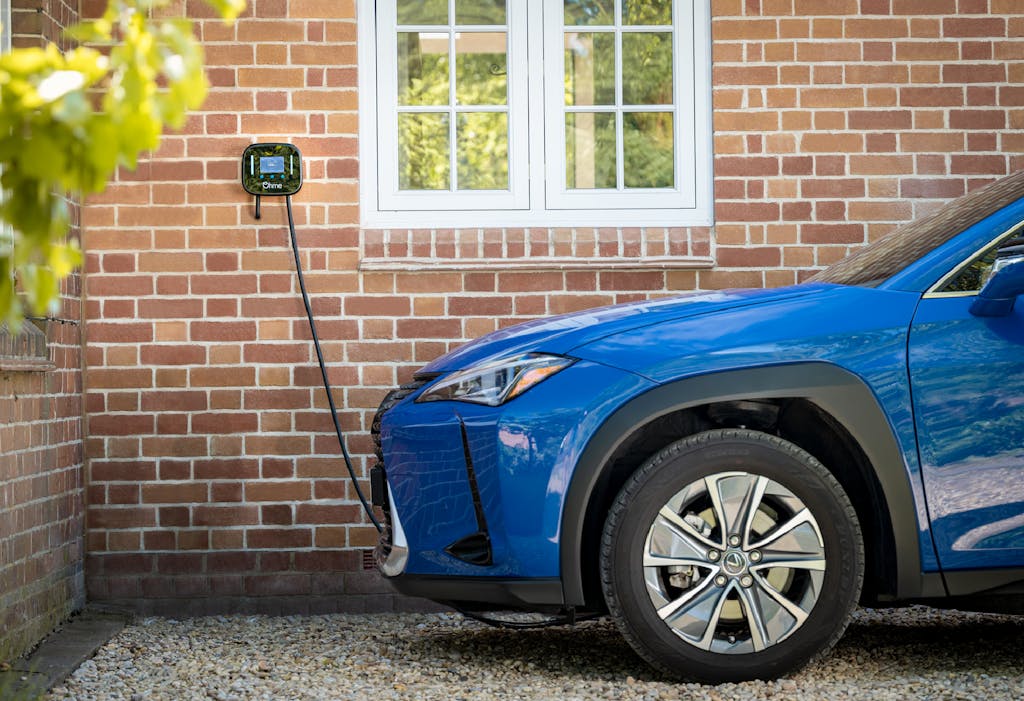
How many solar panels do you need to charge an electric car?
At Sunsave, we don’t take your EV into account when we’re working out how many solar panels you need, because we don’t expect you to power your car with solar-generated electricity.
Instead, we plan for you to charge your car with grid electricity, using an EV tariff’s off-peak rate, because it makes more sense financially (as previously discussed).
However, if you’re set on charging your car with solar electricity, we’ve put together some estimates to help you decide what size system you should get.
On average, you need six solar panels to charge an electric car – assuming each panel has a peak rating of 450W.
That means the average three-bedroom household that’s looking to power its appliances and charge an EV will need around a 6.75 kilowatt-peak (kWp) system, which is 15 solar panels at 450W each.
| 3-bedroom house (no EV) | 3-bedroom house (plus EV) | |
|---|---|---|
| Annual electricity consumption | 3,400kWh | 5,518kWh |
| Number of solar panels (450W) | 9 | 15 |
| Solar panel system size | 4.1kWp | 6.75kWp |
| Battery size | 5kWh | 5kWh |
What’s the cost of charging your EV with solar?
| Hardware | Rough cost (including installation) |
|---|---|
| 6.75kWp solar panel system | £12,460 |
| 5kWh storage battery | £3,000 |
| Solar EV charger | £1,200 |
| Total | £16,660 |
As a rough average, it costs £16,660 to install a solar panel system and home charging point.
First, you’ll typically need a 6.75kWp solar panel system, which usually costs around £12,460. If you add a solar battery, the price tag rises by around £3,000.
You’ll also need a home charger, as you can’t efficiently use solar electricity to power your car without one. These generally cost around £1,200, for an overall cost of £16,660.
These figures are estimates, and the prices you pay will depend on multiple factors, including kit quality, your location, and which installer you hire.
If you'd like to see the savings you could get from a solar & battery system, answer a few questions below and we’ll provide an estimate.
Find out how much you can save
What kind of home do you live in?
Running costs
The average EV needs 2,118kWh per year, which this system will produce in typical UK solar irradiance.
However, due to seasonal variations in the amount of light that hits your solar panels, this supply of solar electricity isn’t consistent.
You’ll therefore need to import around half of your electricity from the grid in winter, plus a small amount during autumn, according to our calculations.
However, in the spring and summer you’ll typically generate more than you need in order to charge your EV, which you can use in your home, cutting your electricity bills further.
So even if you already have a home charger, running your car on solar electricity will still save you hundreds of pounds per year – though not as much as if you charge your car with off-peak electricity and sell your solar electricity to the grid, as previously discussed.
If you don’t already own a home charger, and use public chargers to top up your car’s battery instead, this setup will typically save you more than £800 per year.
The best time for charging your EV with solar
The best time to charge an electric car with electricity from your solar panels is around the middle of the day, when the sun is highest in the sky and your system is generating the most energy.
This is often the point when your panels are generating more electricity than your home needs, so instead of selling it to the grid, you can use it to charge your car.
However, just because you can charge your car with solar electricity, it doesn’t mean you should. Exporting that electricity to the grid will be just as good for the planet, and much better for your bank balance.
How long does it take?
It'll usually take around six hours to charge the average electric vehicle from 20% to 80%.
This is based on a household using a standard 7kW charger on an average EV battery, which has around 70kWh of usable capacity.
If you charge your EV during the day, some of this electricity will come from your solar panels, and some will come from the grid.
With a solar charger, you can set it to automatically charge your car’s battery when your solar panels are generating excess electricity.
Unless you have a solar panel system that generates a tremendous amount of electricity, you won't be able to run your EV on 100% solar power, but you can still massively cut your bills.
It’s usually best to charge your car to no more than 80%, both to lengthen your battery’s lifespan and because it takes roughly the same amount of time to charge up to 80% as it does to charge from 80% to 100%.
You can absolutely charge your car to 100%, but it’ll slightly degrade the battery every time you do, so it’s best to only do it before a long trip. It’ll generally take around 10 hours.
There’s also no harm in discharging your electric vehicle below 20% – as long as you don’t leave it that way for weeks or months – but it’s always safer to have some electricity left in there, just in case.
Charging in the summer vs winter
Since we have seasons in the UK, the amount of daylight hours varies across the year – which means your solar panels will generate more in some months than others.
That means you’ll need to use more grid electricity to charge your car during the winter months, when the days are shorter and the skies are cloudier.
On the flip side, your panels will usually generate more electricity than you can use in summer, which means you can massively cut your EV charging bills and sell the excess to the grid with a solar export tariff.
You can see this generation pattern in the output chart below, which is based on a four-bedroom home in Essex with a 6kWp solar panel system and 5kWh battery.
The system produces almost 25kWh of electricity per day in May and July, but just 4.9kWh each day in December.

What’s the best tariff for solar EV charging?
The best import tariffs for EV charging if you also have solar panels are generally E.ON Next Drive, Intelligent Octopus Go, and Good Energy EV Charge.
These tariffs can be combined with export tariffs that allow you to earn hundreds of pounds per year, including E.ON Next Export Exclusive, Outgoing Octopus, and Good Energy Solar Savings.
For more information, check out our best SEG rates article, which runs through the best import and export tariffs for all kinds of solar homes – including those with an EV.
And if you insist on using solar electricity to charge your EV, the best import tariffs are the same, because there’ll be times when you don’t manage to charge your car or battery in the daytime.
On those days, you can top up your car on a cheap overnight rate.
How popular is EV solar charging?
EVs and solar panels are becoming increasingly popular in the UK, both separately and together.
There are more than twice as many EVs on the road as there were at the end of 2022, and roughly 33% more solar homes, according to government data.
And EV drivers are seven times more likely to have solar panels at home than the average UK household, according to Zapmap's 2023 survey.
There's no data telling us exactly how many people have both solar panels and an EV, but we do know through Zapmap that 29% of EV drivers have gone solar.
The UK has 1,585,643 EVs as of June 2025 . If we assume they all belong to different households, we can say more than 450,000 homes have an EV and solar panels.
However, it’s becoming less common for households to charge an EV with solar panels.
Suppliers are increasingly offering time-of-use tariffs that people can use to cheaply charge their car overnight – and this allows them to take advantage of historically high export tariffs, by selling more of their solar electricity to the grid.
Number of EVs and households with solar panels in the UK, 2020-25
Next steps
You now have all the information you need to decide whether to use solar panels to power your EV, or to sign up for an EV tariff with a cheap off-peak rate that allows you to sell more of your solar electricity to the grid.
Both approaches will cut your electricity bills, but with export rates at an all-time high, using an EV tariff is by far the better option financially – and we expect that to stay the case for the foreseeable future.
If you’re wondering how much a solar & battery system could save you, just answer a few questions below, and we’ll provide you with an estimate.
Find out how much you can save
What kind of home do you live in?
Charging an EV with solar: FAQs
Related articles

Written byJosh Jackman
Josh has written about the rapid rise of home solar for the past six years. His data-driven work has been featured in United Nations and World Health Organisation documents, as well as publications including The Eco Experts, Financial Times, The Independent, The Telegraph, The Times, and The Sun. Josh has also been interviewed as a renewables expert on BBC One’s Rip-Off Britain, ITV1’s Tonight show, and BBC Radio 4 and 5.


